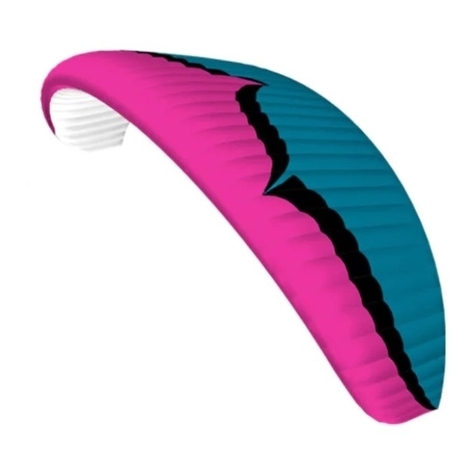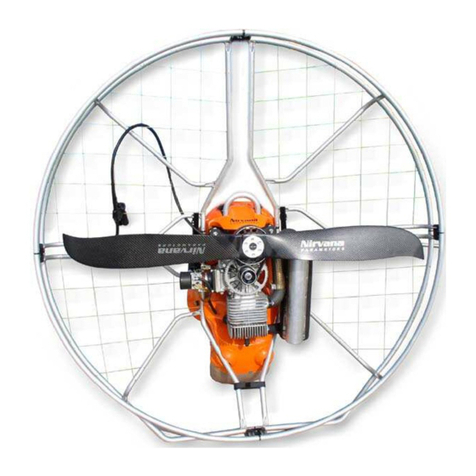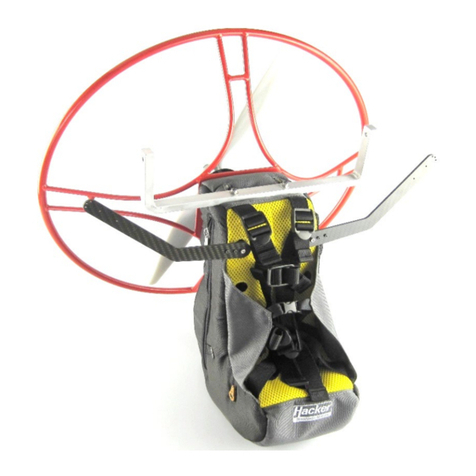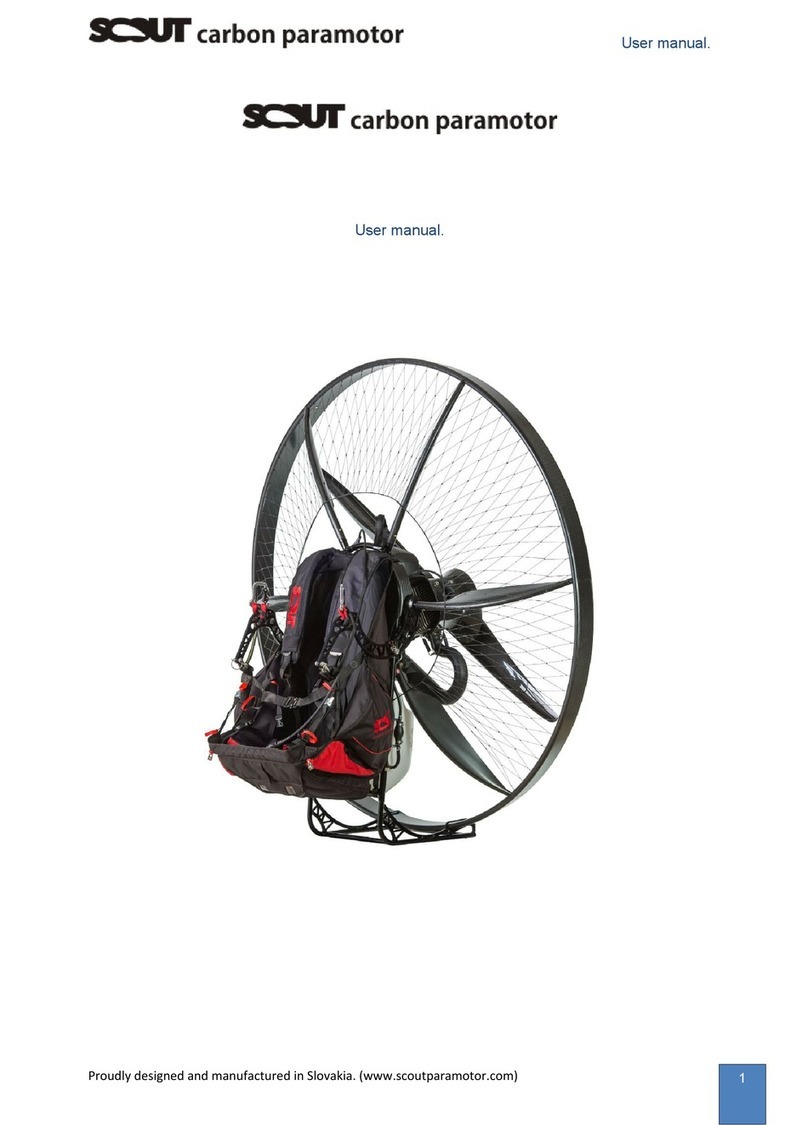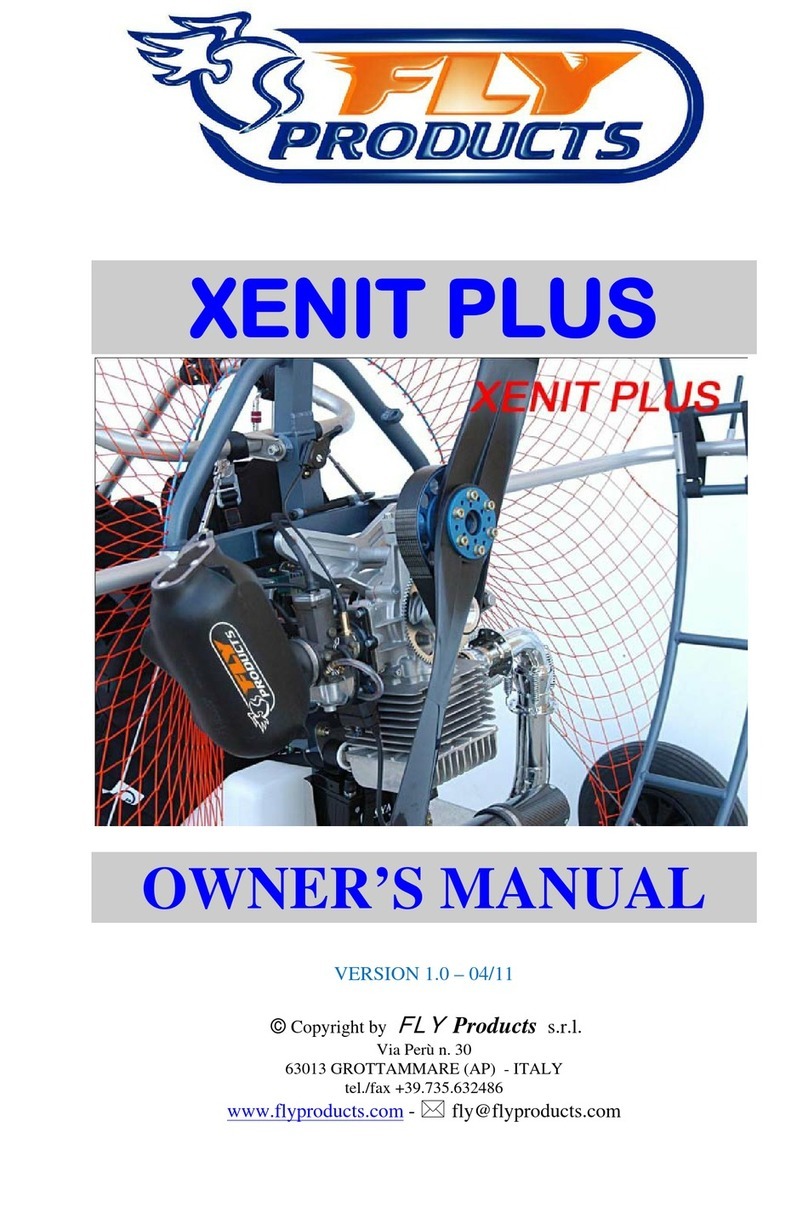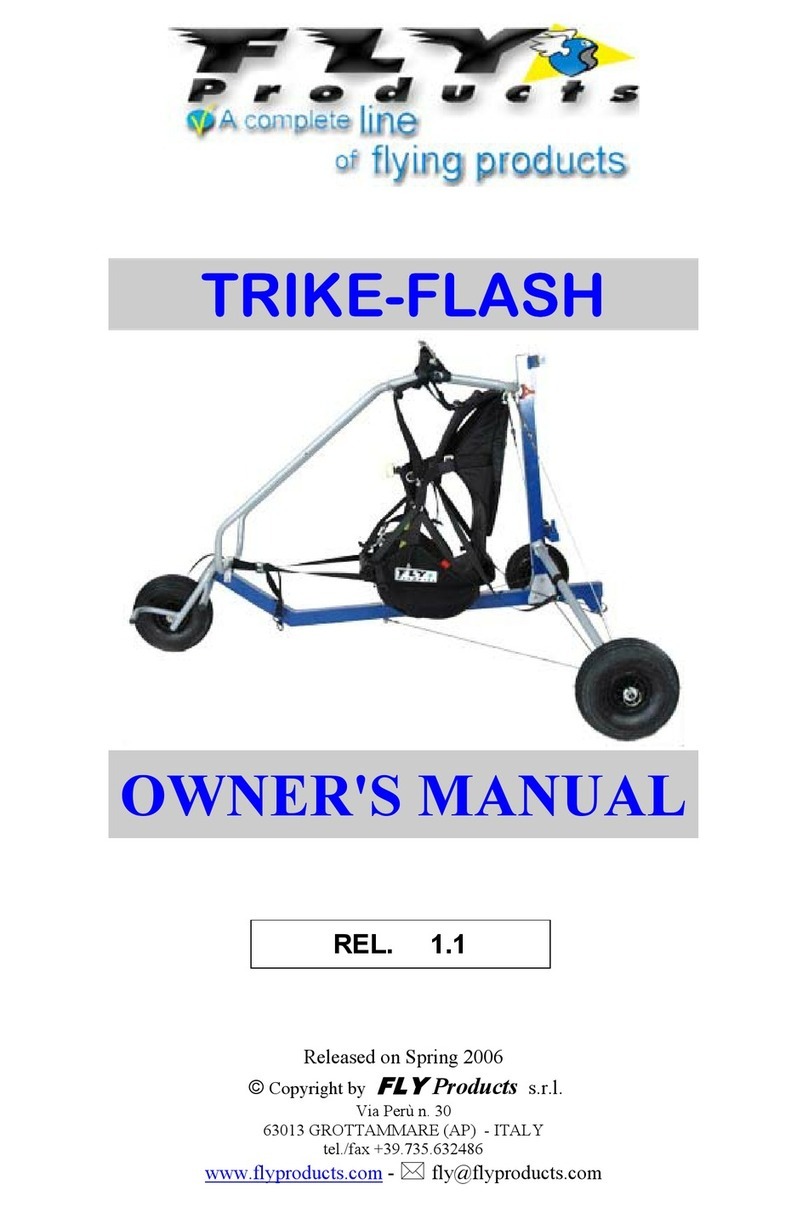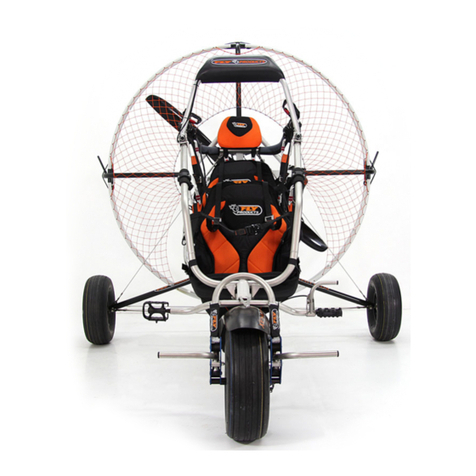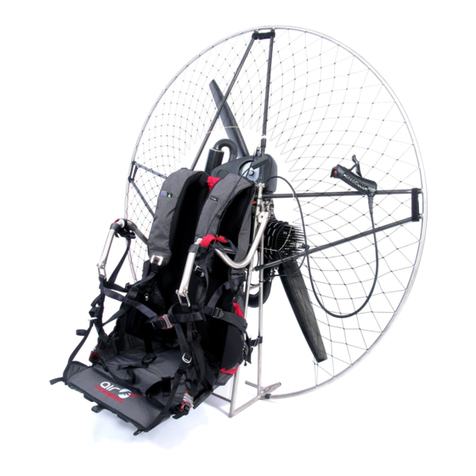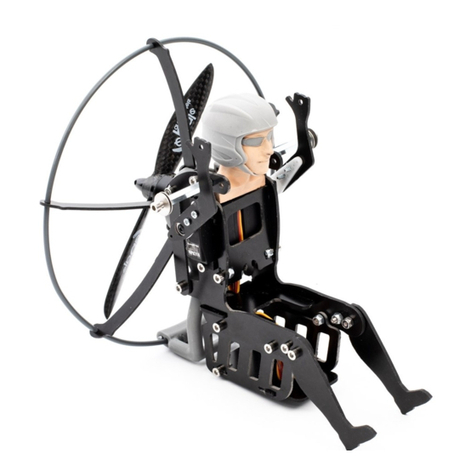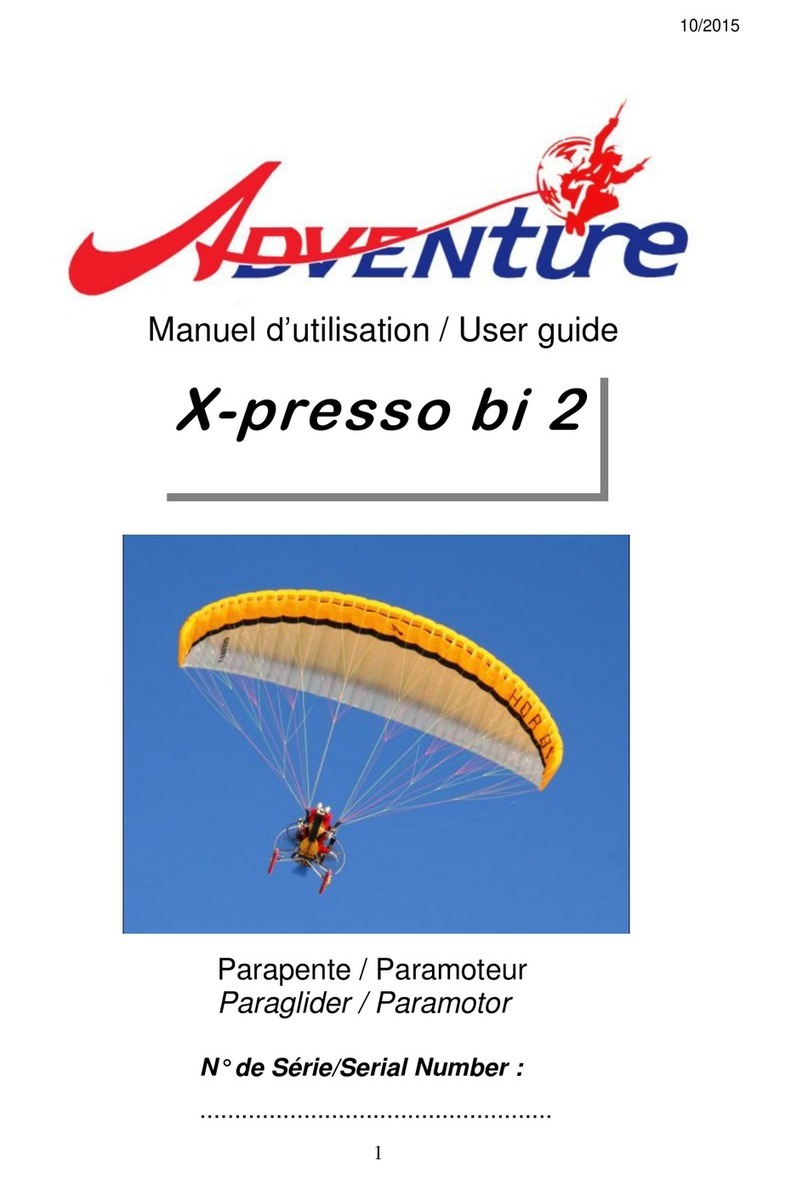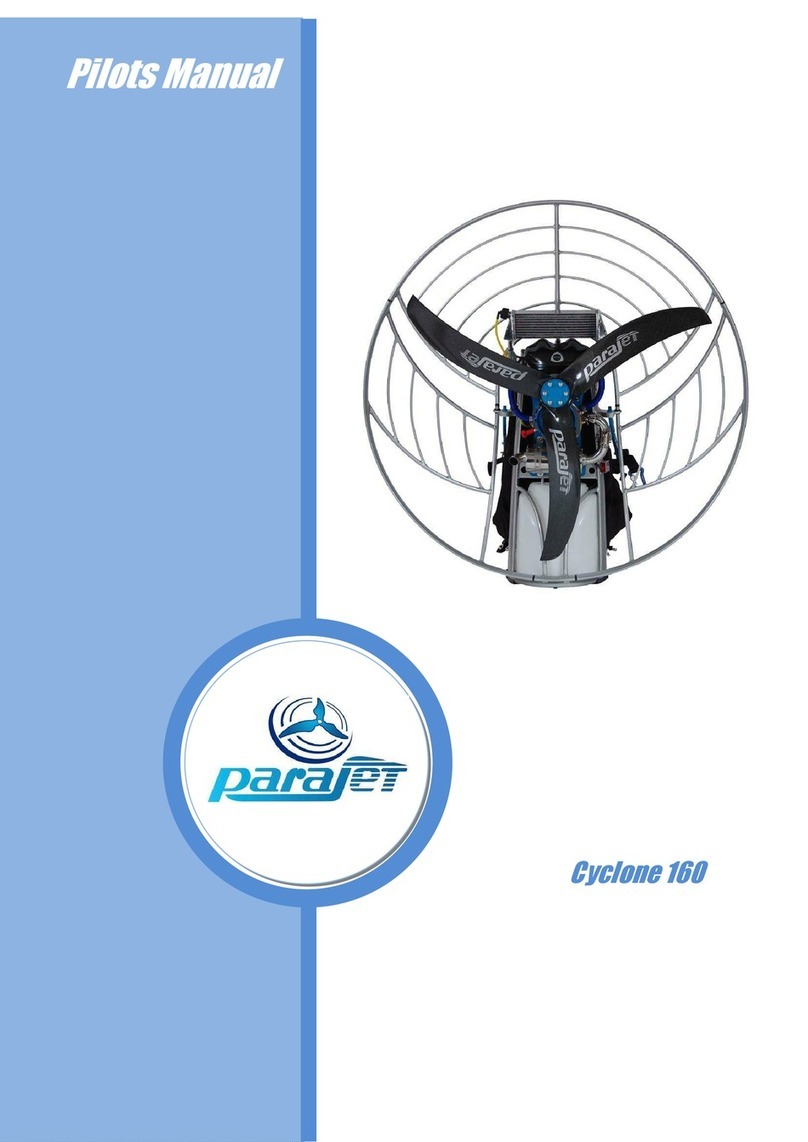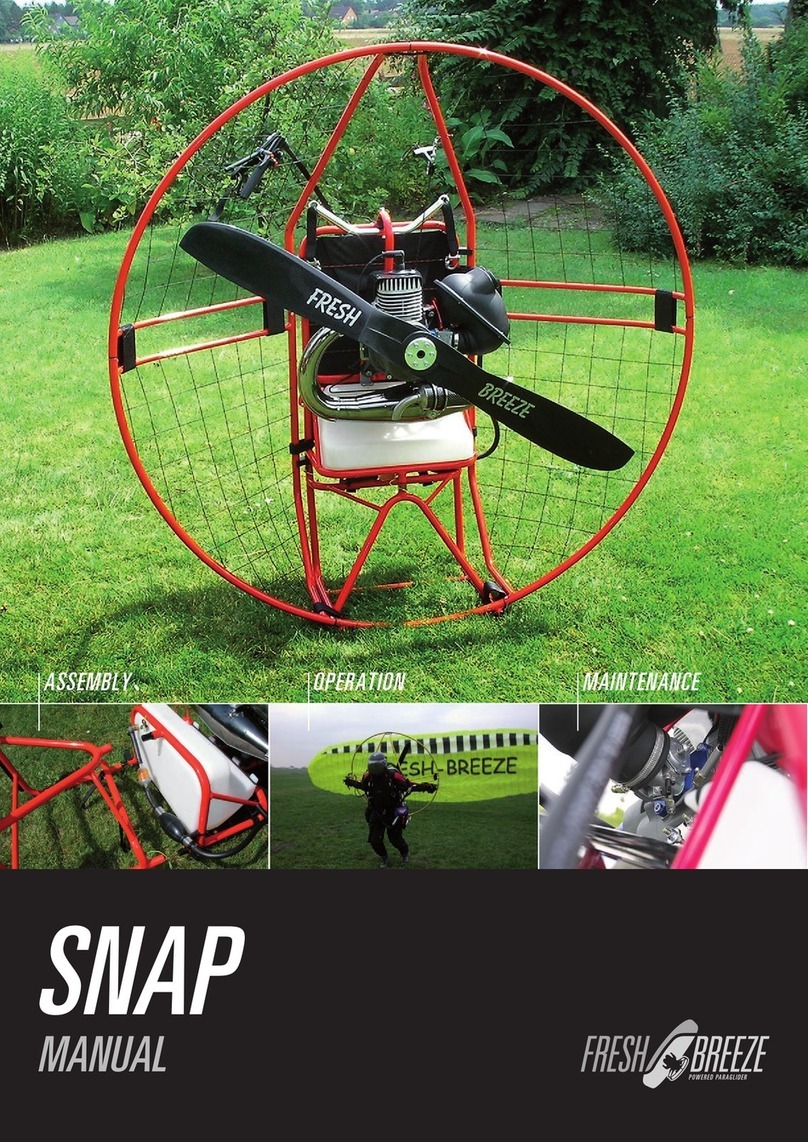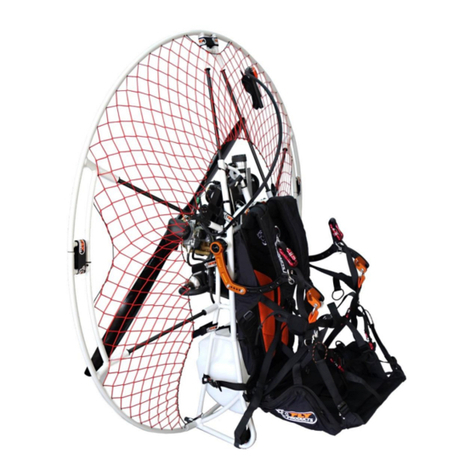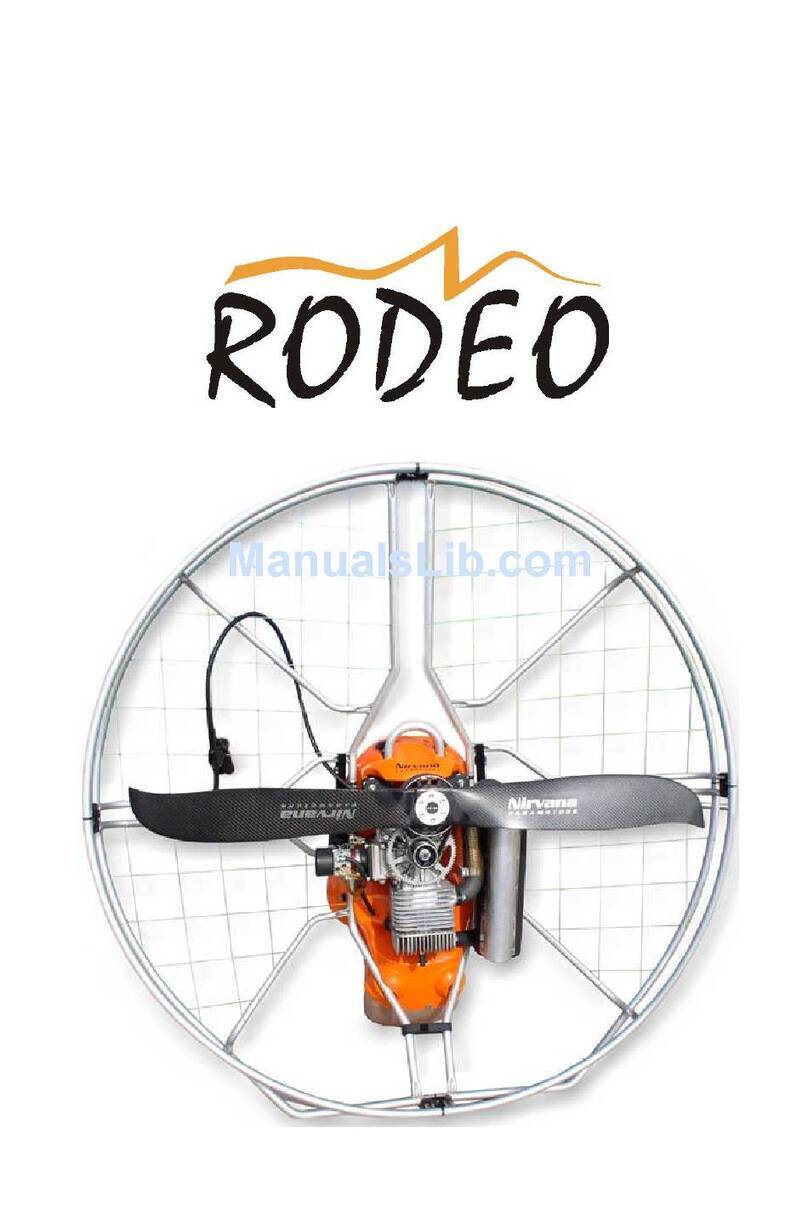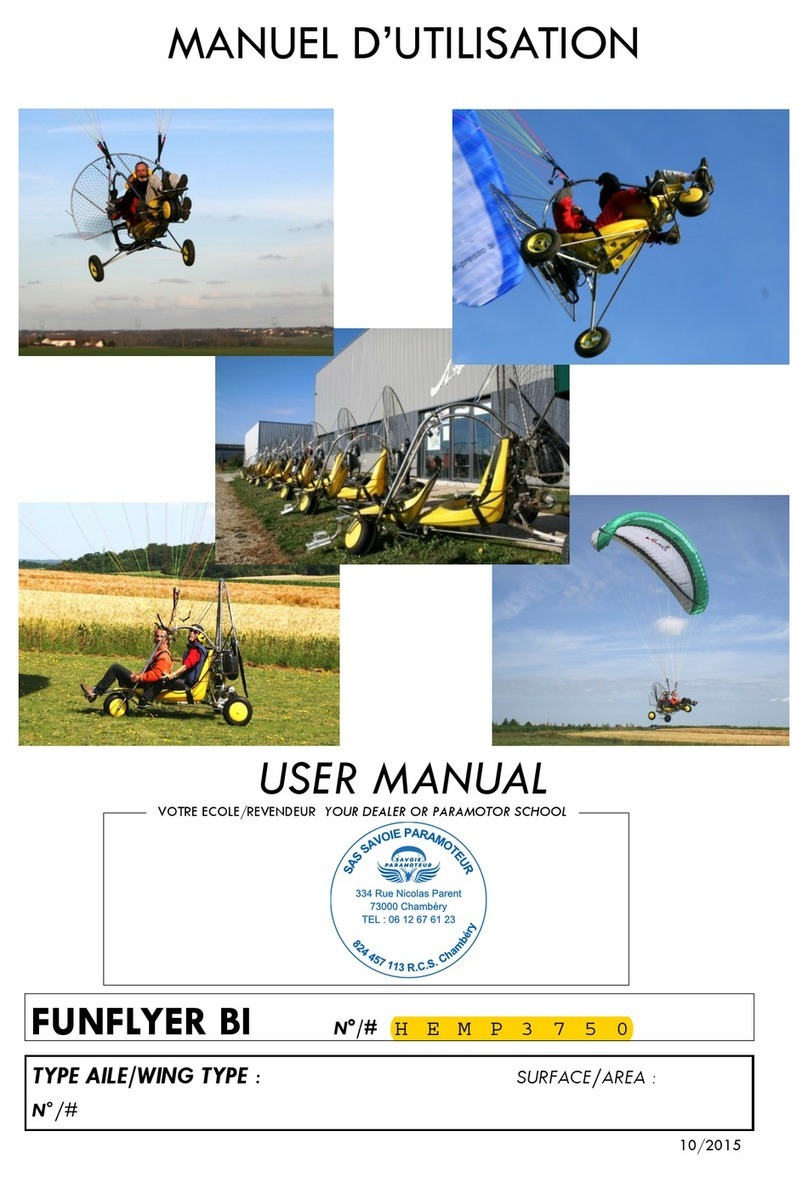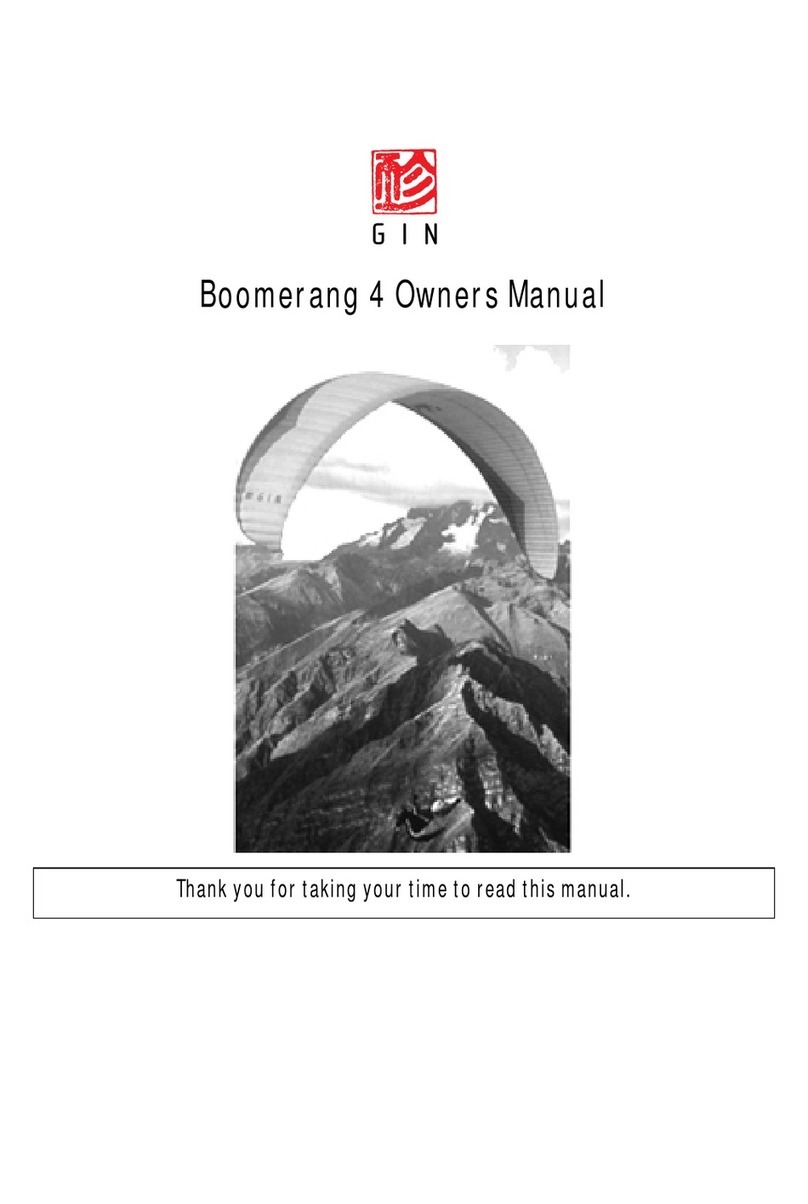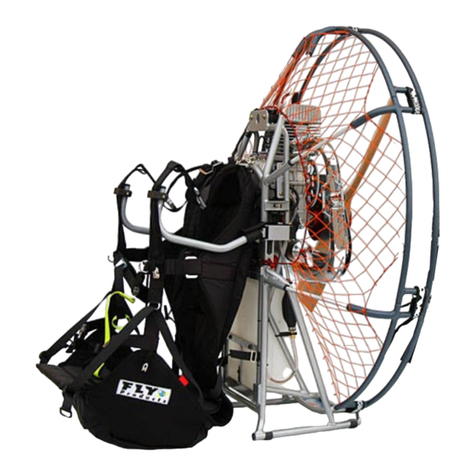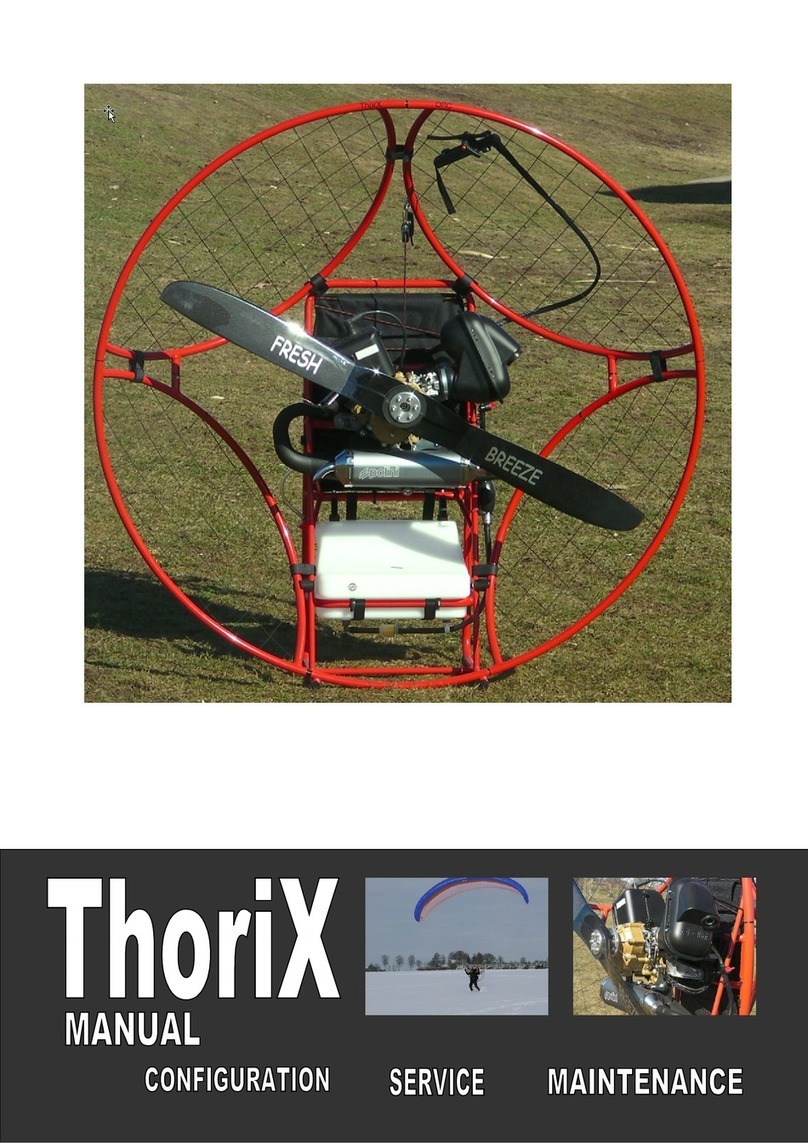“GOLD 130” OWNER’S MANUAL REL . 2.0
© Copyright by
FLY
Products s.r.l. Page 4
1.0 INTRODUCTION AND GENERAL INFORMATION
Congratulations and welcome to the exciting world of FLY PRODUCTS. We are one of the
most experienced and reliable PPG manufactures in the world. Our network of distribution
centers worldwide continues to grow due to our commitment to provide state of the art materials
matched with exceptional craftsmanship in every unit we produce.
1.1 Safety first, WWW! (Who, Where and When can fly it)
Powered Para Gliding (PPG) is the most exciting, least expensive, safest, and most accessible
form of aviation available! However, it is still aviation, and it brings with it all the inherent
potential dangers of aviation. People can, and do, get hurt, and even killed, in any form of
aviation, including PPG. For that reason it is imperative that before fly with this PPG you must
receive proper training from qualified instructors and obtain a valid PPG license, an then offer
PPG the respect all aviation deserves, respect weather and conditions, and realize that in the end,
it is the pilot himself that is fully responsible for his own safety and the safety of fellow pilots
and bystanders.
Depending on every national regulations, the PPG may only be operated in authorized areas and
flights within controlled airspace usually needs a permission given by radio.
Additional requirements like a valid insurance must be fulfilled.
Powered Paragliding is an extremely demanding sport that requires exceptional levels of
attention, judgment, maturity, self-discipline, and attention to detail. It is unlikely that you will
be able to participate in it safely unless you make a conscious and continual commitment to your
own safety.
Due to the inherent risks in flying this or any PPG, no warranty of any kind can be made against
accidents, bodily injury, equipment failure, and/or death.
This PPG is not covered by product liability insurance. Do not start it or fly it unless you are
willing to assume all risks inherent in the sport of Powered Paragliding and all responsibility for
any property damage, injury, or death which may result from the use of this product.
1.2 Notation Used
Certain special terms (NOTE, CAUTION, WARNING) will be used throughout this manual.
Their usage is defined below.
A NOTE provides supplemental information to help clarify a point being made in the text.
Generally, a NOTE is provided to help assembly, use, or maintenance of the product.
Disregarding a NOTE could cause inconvenience, but would not cause damage or personal
injury.
A CAUTION provides supplemental information to help clarify an area where equipment
damage could occur. Disregarding a CAUTION could result in permanent and significant
mechanical damage, however personal injury is unlikely.
A WARNING provides supplemental information to help clarify an area where personal injury
or even death could occur from negligence. Disregarding a WARNING could result in serious
injury or even death.
